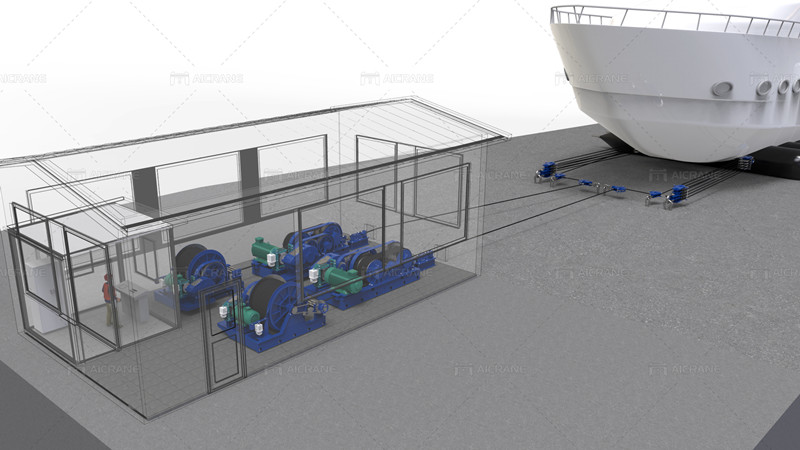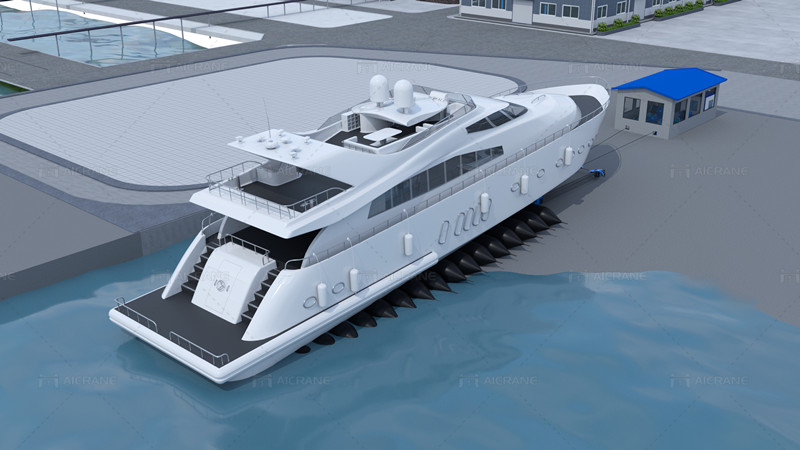Installing boat slipway winches requires careful planning, precision, and adherence to safety guidelines to ensure efficient and secure boat launching and retrieval. A slipway winch, commonly used in marine environments, facilitates the movement of boats in and out of the water along a slipway or boat ramp. This comprehensive guide outlines the step-by-step process of installing boat slipway winches, covering key considerations, safety measures, and essential tasks.

Site Assessment and Preparation
Before initiating the installation process, conduct a thorough site assessment to ensure that the slipway is suitable for winch installation:
Check Slipway Condition: Inspect the slipway for any damage, erosion, or structural issues that may affect the winch installation.
Evaluate Water Depth: Assess the water depth to ensure that it is sufficient for boat maneuvering during launching and retrieval.
Determine Winch Location: Identify the optimal location for installing the winch, considering factors such as accessibility, water depth, and alignment with the slipway.
Winch Selection and Specification
Choose a boat slipway winch that meets the specific requirements of the site and the boats it will handle:
Lifting Capacity: Select a winch with an appropriate lifting capacity based on the size and weight of the boats that will be launched and retrieved.
Power Source: Decide on the power source for the winch, which can be electric, hydraulic, or manual, depending on the site’s infrastructure and operational needs.
Control System: Consider the type of control system, whether it’s a remote control, panel-mounted control, or manual control, depending on user preferences and operational requirements.
Foundation Construction
Construct a stable foundation for the winch to ensure proper alignment and support:
Concrete Foundation: Excavate the foundation area and pour a reinforced concrete foundation of sufficient depth and strength to support the winch and withstand operational loads.
Anchor Bolts Installation: Embed anchor bolts into the foundation to secure the winch securely. Ensure precise placement and alignment according to the manufacturer’s specifications.

Winch Assembly and Installation
Proceed with the assembly and installation of the boat slipway winch:
Unpacking and Inspection: Unpack the winch components, inspect them for any damage during transportation, and ensure all parts are present.
Assemble Structural Components: Follow the manufacturer’s assembly instructions to piece together the main frame, drum, gearbox, and other structural components of the winch.
Motor and Drive System Installation: Attach the winch motor and drive system, ensuring proper alignment and secure connections. Connect power sources according to the specified voltage and power requirements.
Mounting and Alignment: Mount the assembled winch onto the previously prepared foundation, ensuring precise alignment with the slipway. Secure the winch using the anchor bolts and tighten them according to the recommendations of manufacturer.
Cable or Rope Installation
Install the lifting cable or rope onto the winch drum:
Check Cable Condition: Inspect the lifting cable or rope for any signs of wear, fraying, or damage. Replace it if necessary to ensure safe and reliable operation.
Secure Attachment: Properly attach the cable or rope to the winch drum, ensuring it is tightly wound and securely fastened.
Run and Align the Cable: Run the cable along the slipway in a manner that minimizes friction and wear. Ensure the cable is properly aligned with the boat launch and retrieval path.
Safety Measures
Implement safety measures to minimize risks during winch operation:
Emergency Stop System: Install an emergency stop system that allows for immediate halting of winch operations in case of emergencies.
Safety Guards: Install safety guards and barriers to prevent accidental contact with moving parts, cables, or the winch drum.
Warning Signs: Place warning signs indicating the operational area of the winch and providing safety instructions for users.
Testing and Commissioning
Conduct thorough testing to ensure the winch functions as intended:
Functional Tests: Test the winch’s lifting and lowering functions to ensure smooth and controlled operations.
Load Testing: Perform load testing with simulated boat loads to verify that the winch can handle the specified weight capacity.
Control System Checks: Verify the functionality of the control system, ensuring that it responds accurately to user inputs.
Training and User Familiarization
Provide training for users and operators to ensure safe and efficient winch operation:
Operator Training: Train designated operators on the proper use of the winch, including safety procedures, emergency protocols, and routine maintenance tasks.
User Familiarization: Familiarize boat owners and other users with the winch operation and safety guidelines to minimize the risk of accidents or damage.
Regular Maintenance and Inspection
Establish a routine maintenance schedule to prolong the winch’s lifespan and ensure continued reliability:
Lubrication: Regularly lubricate moving parts, such as the winch drum, bearings, and gears, to reduce friction and prevent wear.
Inspections: Conduct periodic inspections of the winch, cables, and structural components to identify and address any signs of wear, corrosion, or damage.
Component Replacement: Replace worn or damaged components promptly to prevent operational disruptions and maintain safety.
Regulatory Compliance
Ensure compliance with local regulations, standards, and safety guidelines:
Permits and Approvals: Obtain any necessary permits or approvals from relevant authorities before and during the installation process.
Inspections: Schedule inspections by regulatory authorities to verify compliance with safety standards and regulations.
Documentation: Maintain detailed documentation of the installation process, including foundation specifications, assembly procedures, test results, and any adjustments made during commissioning.
Installing boat slipway winches is a meticulous process that demands attention to detail, adherence to safety protocols, and rigorous testing. Proper planning, foundation construction, assembly, and testing are crucial to ensuring the winch operates efficiently and safely. Regular maintenance, user training, and compliance with regulatory requirements contribute to the ongoing reliability and effectiveness of the boat slipway winch in facilitating smooth boat launching and retrieval operations.
